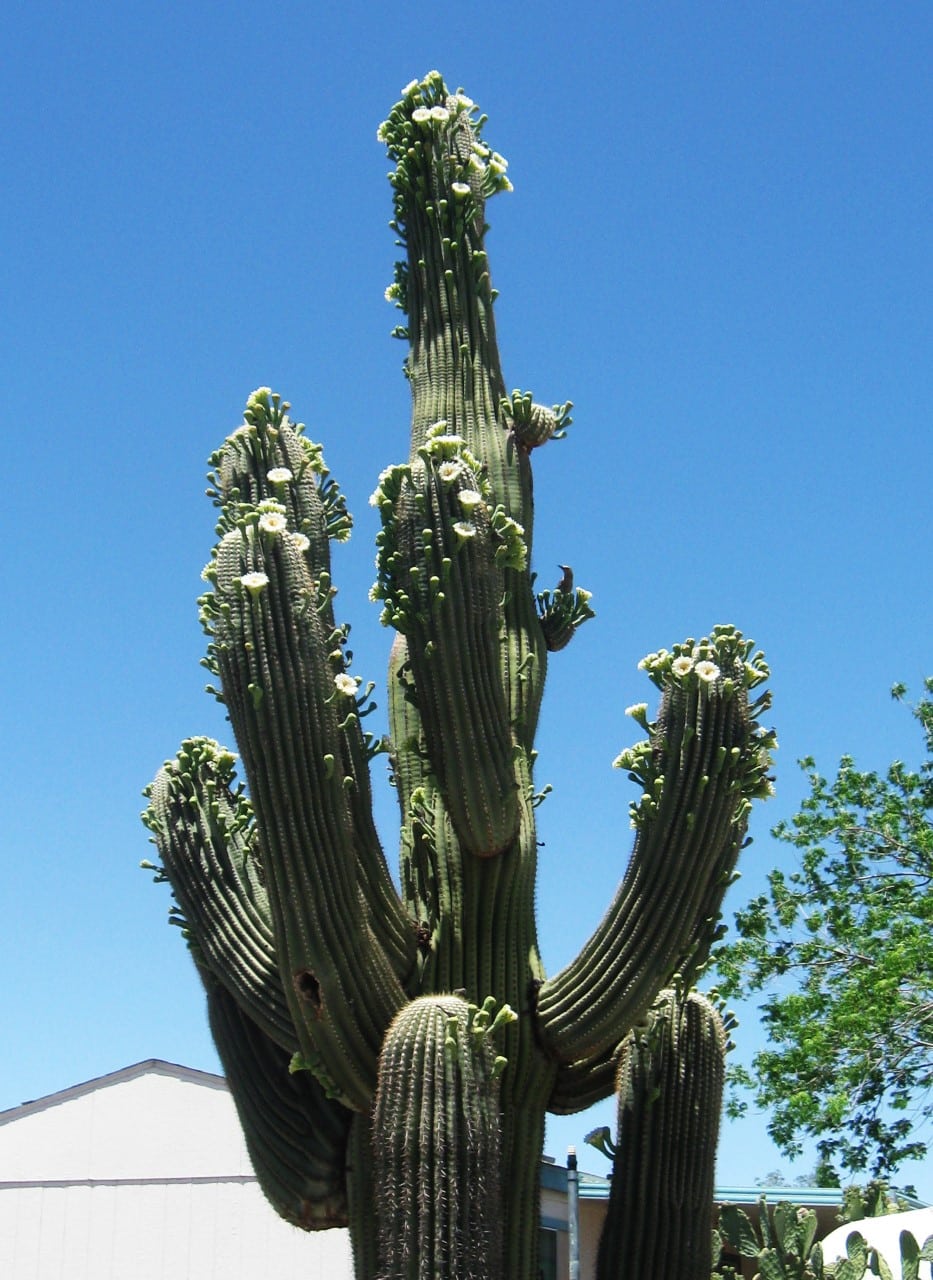TUCSON, Ariz. (CN) — For thousands of years, one plant has served as the sentinel of the Sonoran Desert. Thriving through three distinct biomes and migrating north from Mexico over several million years, the prickly giants unique to Mexico and Arizona are perhaps the region’s most distinctive feature.
But for more than 20 years, almost no new saguaros have sprouted from the desert soil.
Researchers at the University of Arizona’s Desert Laboratory on Tumamoc Hill aren’t sure why.
A delicate process
Frank Reichenbacher, a botanist and volunteer research associate at the lab, says saguaros are missing out on reproduction opportunities as summer monsoons come earlier each year.
“The seeds are intended to germinate with the monsoon rains that come right after the seeds are dispersed,” he said. “So, they flower in April, fruits mature through May and June, then fruits are dropping seeds, or animals are picking the seeds immediately after. And then the monsoon hits.”
Less time before summer monsoons means less time for the seeds to germinate, which means lower regeneration rates. Seeds that develop after initial monsoons hit have a lower chance of regeneration because they receive less water. And as monsoons come earlier, saguaro blooms aren’t adjusting.

Peter Breslin, a Desert Laboratory staff researcher, said it’s unclear what indicators, if any, saguaros use to adjust their timing. What is clear is how plentifully they bloom depends on previous winter rains, which have steadily declined for decades.
“The rainfall's changed, and it’s not helping,” said Bill Peachey, an independent ecologist and botanist based near Tucson.
Peachey said the low winter precipitation in 2022 is why nearly no saguaros bloomed last spring. Saguaros have had successful blooming events in only 12 of the last 20 years, he said. On a plot of 139 saguaros on state land in Pima County, 28 miles southeast of the Desert Laboratory on Tumamoc Hill and about 1,000 feet higher, he counted 120 blooms in 2004 and only 50 in 2022.
“Not a fruit was produced,” he said.
Peachey said those low-blooming events coincided with extreme heat. Saguaros produced even fewer blooms in those years than during a freeze in 2011 and the two years of aftermath.
“I can’t say this is climate change,” he said. “These are weather events. But these weather events exactly 100% match two of the big statements about climate change: you’re gonna have more of them than you’ve had before, and you’re gonna have extremes.”
While some of the saguaros on the plot didn’t survive the 2011 freeze, Breslin said he sees no lasting signs of it on Tumamoc Hill, where lower elevation could mean slightly higher temperatures. In the Santa Catalina Mountains, the saguaros “were flowering like crazy” last year while virtually dormant in other areas.
“They’re just as dynamic as daisies,” Peachey said of the variance of saguaros across different temperatures and terrains. “The conditions change, they change.”
Side bloom mystery
One of the most significant changes in saguaro behavior was the side blooms of 2021.
“We’ve never observed that before,” Reichenbacher said.

Rather than blooming only from the tips of the saguaros' stems and arms, flowers sprouted from all sides of the cacti in what the National Park Service called “an extremely rare phenomenon.” So rare, in fact, that nobody really knows why it happened.
Side blooms themselves aren’t rare. When a saguaro areole doesn’t bud in the spring, it still can bloom the following year. Because it’s now lower down the spine and the flower can’t get enough sap to sustain it, the flower aborts and falls off almost immediately. But in 2021, they didn’t all abort. Many of them produced fruits.













